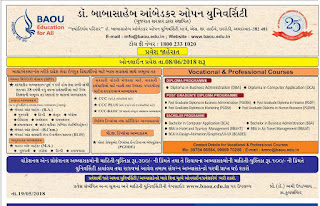Excel's Some most useful Functions Freeze panes, Protect Sheets, Comments, Format Painter, Rotate Texts, Filter, Gridlines and Headings
CLICK HERE TO SEE THIS VIDEO 👆👆
Excel's Some most useful Functions Freeze panes, Protect Sheets, Comments, Format Painter, Rotate Texts, Filter, Gridlines and Headings
There are several stories popular in Gujarati folk literature which relate to children. There is a long tradition of Purana stories in Indian literature which deals with topics, particularly myths, legends and other traditional lore. The stories derived from Ramayana, Mahabharata, Panchtantra, Hitopadesha and anecdotes of Akbar-Birbal, Bhoja-Kalidas, Singhasan Battisi, Baital Pachisi, Åšukasaptati are told to children for generations.[1]
The current form of children's literature started after the education in Gujarati was aligned to western pattern in 1826 during British Raj. The Native Schools and Books Society established in Bombay in 1820 had published books for new schools. They were for co-curriculum reading. Initial works in Gujarati children's literature were translations and adaptations. In 1826, Bapulal Shastri Pandya translated Aesop's Fables in Gujarati as Aesop Nitikathao. In next few years more translations of Aesop's Fables published. The Gulliver's Travels translated as Gulliverni Musafari. In 1831, the two parts of Balamitra was published starting an era of current form of children's literature. It had poems, stories, anecdotes and jokes.[1]Ranchhodbhai Dave published Isapnitini Vato adapted from Aesop's Fables in 1859.[2] The Bombay Education Society published four books in 1840; Shishusadbodhmala, Balamitra, Balasathi and Panch Pakhaon (Panchapakhyana); having poems, stories, anecdotes, biographies for children. Amichandra wrote Batrish Pultini Varta based on Singhasan Battisi.[1]
Initially there were translations of stories from classic Indian literature. Tunki Kahanio (1881) published by Anubhai Neelkanth had 118 translated stories.[2] Hargovingdas Kantawala published adapted short stories Tachukadi So Vaat in six volumes. He also wrote novel regarding misrule of the foolish king in 1887. He also published Kanyavanchanamala, the first book exclusively for girls.[1]Ichchharam Desai translated Evenings at Home as Balako No Anand (1895). He also wrote Ghashiram Kotwal (1903) based on Ghashiram from Maratha history.[1] Jaysukhlal Joshipura adapted Alice's Adventures in Wonderland as Alka no Adbhut Pravas. Narayan Hemchandra wrote Mahabharat Ni Vartao (1904) based on events from the epic Mahabharata. Manchharam Ghelaram edited a collection of tales, Murakho, the fool, which was a theme on which several others had written. Sharda Mehta published Puranvarta Sangraha (1906) based on mythological tales from Purana.[1] Kalyanrag Joshi published Deshdeshni Vato (1914) and Vigyan ni Vato (1914) about worldview and science respectively.[1][3]
The original children's literature rapidly expanded due to efforts of Gijubhai Badheka who was actively involved in reforms in children's education. He started the musical literature for children and is considered the father of children's literature in Gujarati. He published five books in 1922 and later cofounded a school, Dakshinamoorti, in Bhavnagar which published large number of books for children. He was joined by Jugatram Dave, Taraben Modak, Mulshankar Bhatt, Vishnu Trivedi, Harbhai Trivedi, Ramnarayan Pathak, and several others. Nanabhai Bhatt published stories based on characters from Ramayana and Mahabharata as well as Hindu Dharma ni Akhyayikao for young adults. Mulshankar Bhatt translated science fictionaladventure novels by Jules Verne in Gujarati. He wrote Sahsikoni Shrusti, a simplified version of Jules Verne's The Mysterious Island, and Khajanani Shodhma, a simplified version of Stevenson's Treasure Island. Dakshinamoorti published more than 150 children's books.[3][1][4]
Natvarlal Malvi and Ishwarlal Vimavala established Gandiv in Surat which published works for young-adults. They published illustrated 30 stories of popular anthropomorphic animal character Bakor Patel created by Hariprasad Vyas. Other major authors were Kaushiram Pandya, Chhaganlal Pandya, Chimanlal Bhatt, Dhirajlal Shah, Manubhai Jodhani, Dhumketu, Tarachandra Adalja, Bhimbhai Desai, Subhadra Gandhi, Bhikhabhai Vyas, Jaybhikhkhu, Himmatlal Shah, Niranjan Varma and Prasannavadan Dixit. Bholashankar Vyas wrote humorous stories for children. Ratilal Nanabhai Tanna, Vasant Nayak and Mahesh 'Mast Fakir' also wrote several stories. Foram Lahario by Sharda Prasad Varma and Vanarsena ni Vato by Keshav Prasad Desai were also published. Ramanlal N. Shah, Sumati Patel and Nagardas Patel published some stories under title of Baljeevan and Balvinod. Jhaverchand Meghani also wrote some patriotic stories for children. Hansa Jivraj Mehta wrote Balvartavali, Arun Nu Adbhut Swapna, Baval Na Parakramo. Chandrashankar Bhatt published Balmitra which published stories which were later collected as Balmitra Ni Vato, Sindbad Sheth, Kumar Veersen.[5]
Two major authors who published extensively in children's literature were Ramanlal Soni and Jivram Joshi who contributed for more than five decades. Ramanlal Joshi created Galbo Shiyal and associated animal stories. His Mangalu was popular among children. Jivram Joshi created several popular characters including Miya Fuski, Chhel-Chhabo, Chhako-Mako, Adukiyo-Dadukiyo.[6] Other popular character based stories were Bogho of Harshad Patel, Vinu of Navalkant Bhavsar, Venakaka of Juga Pandya, Fatubha Fankda Na Parakramo by Manubhai Shah, Shekhchalli of Jaymalla Parmar, Akkad ane Fakkad of Narad, Budhiyo of Madhusudan Parekh, Soti and Pothi of Dhananjay Shah, Miyalabbe of Chandrkant Amin and Muchhala Menamasi of Dhiraj Brahmabhatt.[7]
In the field of science fiction, Shrikant Trivedi, Harish Nayak, Yashwant Mehta, Dhirajlal Gajjar, Ratilal Nayak, Kanaiyalal Ramanuj, Girish Ganatra, Rajni Vyas, Suresh Jethna, Nagendra Vijay, Yashwant Kadikar, Kishor Pandya, Nagin Modi, Bipin Patel, Ishwar Parmar, Sakalchand Saheb contributed. The stories based on Panchtantra, Hitopadesha, Akbar-Birbal folk tales, Mulla Nasiruddin, Tenali Rama are frequently translated and written by various authors over the years. Popular works from world literature such as Tarzan, Hercules, Robinson Crusoe, Gulliver's Travels are frequently adapted



